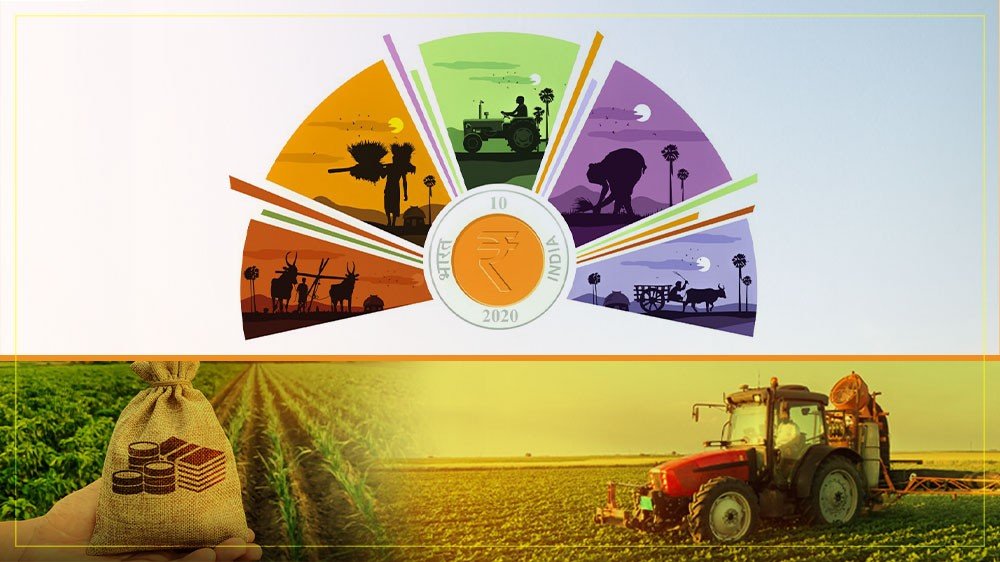
Dr.S.L.N.T.Srinivas
Dr.S.L.N.T.Srinivas
Expert in Cooperative Governance & Management
Member, All India Authors Group
NCCT: Ministry of Cooperation, Govt. of India
In India’s rural credit landscape, cooperative banks once stood as the pillars of empowerment—delivering timely and affordable finance to small and marginal farmers. For decades, they symbolized collective trust, local resilience, and democratic ownership in agricultural financing. However, in recent years, this once-dominant cooperative credit system has witnessed a steady erosion in both relevance and reach, prompting urgent calls for revitalization from the Ministry of Cooperation (MoC) and the National Bank for Agriculture and Rural Development (NABARD).
In a recent high-level virtual meeting chaired by Cooperation Secretary Dr. Ashish Kumar Bhutani, the Ministry of Cooperation and NABARD jointly deliberated on the alarming decline in the share of cooperative banks in India’s agricultural credit flow. The discussion highlighted both structural weaknesses and strategic opportunities to reposition cooperative institutions as key players in the country’s rural credit architecture.
A Declining Legacy: The Numbers Speak
According to NABARD research, cooperative banks’ share in short-term agricultural credit has declined from about 66% in 1995–96 to just 59% in 2021–22. The longer-term trend is even more concerning—their overall contribution to agricultural lending has fallen from nearly 86% in the early 1970s to below 20% in recent years.
The latest data compiled by NABARD indicates that in FY2024, cooperative banks disbursed ₹2.3 lakh crore in agricultural credit, representing 9.2% of total Ground-Level Credit (₹25.1 lakh crore)—slightly below their annual target of ₹2.6 lakh crore. In FY2025, disbursement rose marginally to ₹2.4 lakh crore, but their share dipped further to 8.4% of total agricultural credit (₹28.7 lakh crore). Meanwhile, commercial banks commanded a dominant 81%, and Regional Rural Banks (RRBs) held 10.8%.
This steady decline signals a deeper structural problem—one that cannot be addressed through financial infusion alone but demands systemic, technological, and governance reforms across the cooperative banking network.
Understanding the Erosion
The fall in cooperative banks’ dominance has been attributed to multiple intertwined factors:
- Limited capital base restricting lending capacity.
- Weak governance and professional management, often linked to local political interference.
- Outdated technology and manual operations that make them less competitive.
- Inadequate risk assessment frameworks and compliance standards.
- Increased competition from commercial and regional rural banks that have leveraged digital platforms and policy incentives more effectively.
These issues have collectively weakened the cooperative sector’s ability to attract deposits, meet regulatory standards, and compete in a rapidly evolving financial ecosystem.
Government and NABARD’s Renewed Focus
Recognizing the urgency, the Ministry of Cooperation (MoC) and NABARD have charted a multi-dimensional action plan aimed at reversing this downward trajectory. The recent consultation identified four key strategies for strengthening cooperative banks’ role in agricultural credit delivery:
- Accelerated Computerisation and Digital Integration:
The Ministry’s Centrally Sponsored Project for PACS Computerisation aims to digitally link over 63,000 Primary Agricultural Credit Societies (PACS) with District Central Cooperative Banks (DCCBs) and State Cooperative Banks (StCBs). This digital connectivity will ensure transparent, real-time data sharing, improved loan processing efficiency, and integration with national credit systems. - Institutional Capacity Building and Training:
NABARD has emphasized structured training programs for cooperative bank staff to improve risk management, governance, and lending quality. The focus is on developing professional bankers within the cooperative system who can balance social objectives with financial prudence. - Policy Incentives for Enhanced Lending:
To empower cooperatives to lend more effectively to small and marginal farmers, MoC is exploring targeted policy interventions, such as concessional refinancing, flexible capital norms, and performance-linked incentives. - Diversification into Non-Credit Activities:
Encouraging PACS to undertake complementary businesses such as input supply, warehousing, value addition, and marketing will improve their revenue sustainability and resilience against loan defaults.
The Cooperative Advantage:
Despite the setbacks, cooperative banks possess intrinsic strengths that no other institution can replicate. Their deep local roots, community trust, and proximity to farmers make them ideal vehicles for inclusive financial delivery. Unlike commercial banks, cooperatives understand the local socio-economic realities and can adapt credit products to suit the needs of smallholders, tenant farmers, and rural entrepreneurs.
Moreover, the Ministry of Cooperation, under the leadership of Union Home and Cooperation Minister Shri Amit Shah, has been consistently emphasizing the need to strengthen cooperatives as a “people’s movement” rather than mere financial entities. The ongoing initiatives to establish multistate cooperatives, model by-laws for PACS, and cooperative data repositories are part of a larger national framework to modernize and professionalize the sector.
The Way Forward: From Erosion to Empowerment
If cooperative banks are to reclaim their lost ground, the approach must be comprehensive and reform-driven.
In the long term, a Cooperative Credit Revival Mission, jointly led by MoC and NABARD, could systematically reengineer the financial, managerial, and technological frameworks of India’s cooperative banking system.
The decline in cooperative banks’ share of agricultural credit is not inevitable—it is reversible. What is required is vision, coordination, and conviction to restore their rightful place in rural finance. As the Ministry of Cooperation and NABARD converge on a shared mission, India stands at a critical juncture where cooperatives can once again become agents of rural prosperity and financial inclusion.
Source: National Bank for Agriculture and Rural Development (NABARD) – Agricultural Credit Data (FY2024–25) and Ministry of Cooperation briefing, October 2025.






